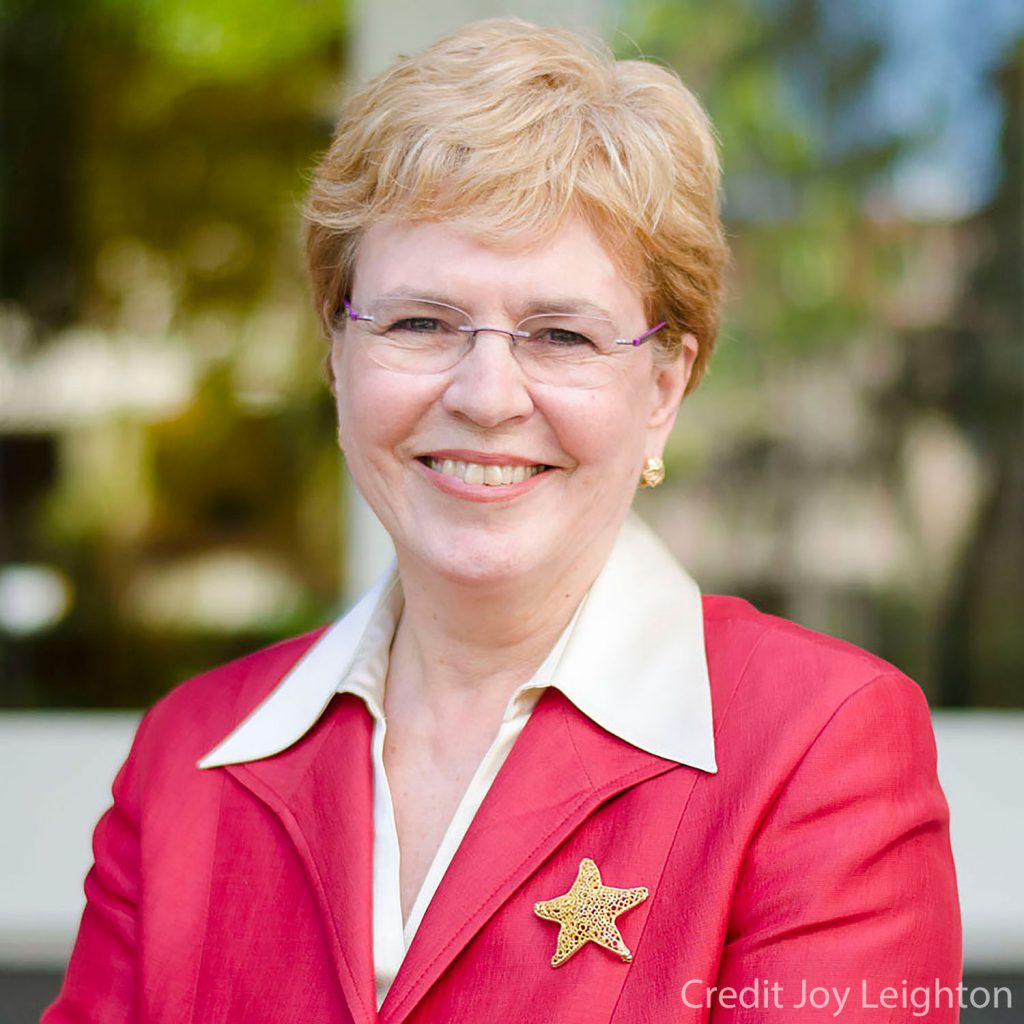Mary Sears Medal
ABOUT
The Mary Sears Medal is awarded biennially to an individual for innovative, and impactful contributions to the advancement or application of biological oceanography, marine biology, or marine ecology, along with outstanding contributions to education and mentorship in the field. Additionally, the Sears Medal seeks to recognize individuals who have made significant contributions toward educating and mentoring students and early career ocean professionals or who have conducted significant interdisciplinary research and/or collaborative work towards meaningful societal impact. The Mary Sears Medalist is invited to give the Sears Lecture at a designated Ocean Sciences Meeting.
CRITERIA
Outstanding contributions to the understanding of and/or the advancement or application of biological oceanography and marine biology.
These contributions may be demonstrated by:
- Educating and mentoring students and early career ocean professionals
- Interdisciplinary research in ocean science
- Collaborative work towards meaningful societal impact
ELIGIBILITY
NOMINEES
- Active membership in The Oceanography Society is not required at the time of nomination.
- TOS officers and members of the Council are not eligible for selection during their terms of service.
- Nomination is for an individual from any country. Nominations are sought for individuals who have not received similar awards in the past two years (from TOS or other societies).
- If selected, nominees must certify their compliance with all TOS policies, specifically the Professional Integrity, Ethics, and Conduct and Guidelines on Implementation.
NOMINATORS
- Anyone can serve as a nominator for another individual. Potential candidates should feel encouraged to ask a potential nominator to advance a nomination. We also encourage self-nominations. Self-nominations should also include a nomination letter.
- Nominators are not required to be TOS members.
- One co-nominator is allowed.
- Nominators must certify their compliance with all TOS policies, specifically the Professional Integrity, Ethics, and Conduct and Guidelines on Implementation and acknowledge the TOS Values Statement on Justice, Equity, Diversity and Inclusion.
SUPPORTERS
- Supporters are not required to be TOS members.
SUBMISSION AND DEADLINE INFORMATION
- Nominations must include the elements described in the Nomination Package section below.
- Nominations must be submitted using the Online Nomination System. You will be prompted to login. If you don’t have an existing account, please create a New Users account in order to complete your submission.
- Submissions are due by November 7, 2025.
NOMINATION PACKAGE
Nominations are must include the following elements:
1. CITATION
- Please suggest text that may be edited to appear in news releases and on a certificate presented to the recipient. The text of this citation should be 200 characters or less.
2. PROFESSIONAL HISTORY
- Nominee’s curriculum vita or resume (five pages maximum) must be up to date and include the nominee’s name, mailing and email addresses.
- A description of the nominee's outstanding contributions (two pages maximum). If in the form of a bibliography, include key publications or products and indicate when students or postdocs appear as first author. If in narrative form, please provide descriptions and include any links that may be available to reference material (website, projects, initiatives, etc.).
3. NOMINATION LETTER
- The nomination letter can be a maximum of two pages and must include the name, title, affiliation, and contact information for the nominator or co-nominators.
- The letter should succinctly describe why the nominee is suited to receive the award, highlight their accomplishments, and elaborate on any information that is not specifically addressed in the nomination materials.
4. SUPPORTING LETTERS
- At least two but not more than three individuals may provide support for the nomination. These individuals are in addition to the nominator or co-nominators. Supporting letters are capped at two pages in length (800 words maximum, 12-point font) and must include the supporter's name, title, and contact information, relationship to the nominee, and clear justification for the qualifications of the nominee.
ABOUT MARY SEARS
Mary Sears (1905–1997) was one of the leading oceanographers of her day, playing a prominent role in the development of modern oceanography. Born in Wayland, MA in 1905, Mary attended Radcliffe College, where she received her bachelor’s degree in 1927, her master’s degree in 1929, and her Ph.D. in Zoology in 1933. While a graduate student, she worked at Harvard University with Henry Bigelow, founder and first Director of the Woods Hole Oceanographic Institution (WHOI). As one of Bigelow’s first ten hires at WHOI in 1932, Mary would play an essential role in the institution’s development over the next fifty years. From 1932 to 1943, she worked as a plankton researcher at WHOI, while also teaching at Harvard, Radcliffe, and Wellesley.
In 1943, Mary began her long association with the U.S. Navy. As a Lieutenant Junior Grade in the WAVES, she organized and headed the new Oceanographic Unit of the Navy Hydrographic Office. During her tenure as its head, the Oceanographic Unit expanded to over 400 personnel and was charged with aiding the Navy in achieving strategic advantages in its war effort by providing analyses of tides, surf heights, and other essential oceanographic metrics. Roger Revelle, who worked with her during the war, was later to recall that “because the Federal Government has very little memory, it is generally forgotten that the first Oceanographer of the Navy in modern times was a short, rather shy and prim WAVE Lieutenant, J.G. …They underestimated the powerful natural force that is Mary Sears.”
After the war, Mary returned to WHOI where she made her lasting mark on oceanography through community leadership and scholarly publication. In 1959, she chaired and helped establish the First International Congress on Oceanography, held at the United Nations. Mary compiled and edited the invited lectures from that Congress, publishing in 1961 the book Oceanography, considered by many to provide the benchmark against which all future oceanographic research would be evaluated. In an encore performance, Mary co-edited with Daniel Merriman, Oceanography: The Past, which compiled invited lectures from the Third International Congress on the History of Oceanography, held at WHOI in 1980 in celebration of the Institution’s fiftieth anniversary. In addition to these books, Mary helped establish the journals Deep-Sea Research and Progress in Oceanography, serving as the founding editor of the former from 1953 to 1974.
In recognition of her service to the oceanographic community, Mary received recognition in both usual and unusual ways. In 1964, she was elected a Fellow of the American Academy of Arts and Sciences. In 1985, on the occasion of her 80th birthday, Deep-Sea Research dedicated an issue to her, noting that Mary Sears “has probably played a greater role in the advancement of oceanographic studies than any other woman.” In 2000, the U.S. Navy recognized her service by launching the 300-foot Oceanographic Survey Ship USNS Mary Sears named in her honor.
MEET THE RECIPIENT
 2020 MEDAL – DR. JANE LUBCHENCO
2020 MEDAL – DR. JANE LUBCHENCO
Dr. Jane Lubchenco was selected as the first recipient of the Mary Sears Medal. This honor recognizes Professor Lubchenco’s exceptional leadership and original contributions to research on biodiversity, rocky seashore ecology, and solutions to restore ocean health and sustainable fisheries. In addition to being a renowned educator and among the most highly cited and most influential marine scientists in the world, Dr. Lubchenco served as Undersecretary of Commerce for Oceans and Atmosphere and Administrator of the US National Oceanic and Atmospheric Administration. She later served in the US Department of State as the first Science Envoy for the Ocean.
QUESTIONS?
If you have any questions about the the Sears Medal, please contact Jenny Ramarui, TOS Executive Director.
Background photo credit: serebryannikov/iStock.com

© 2025 The Oceanography Society
1 Research Court, Suite 450-117, Rockville, MD, 20850, USA | Phone: (1) 301-251-7708 | [email protected] | Privacy Policy




